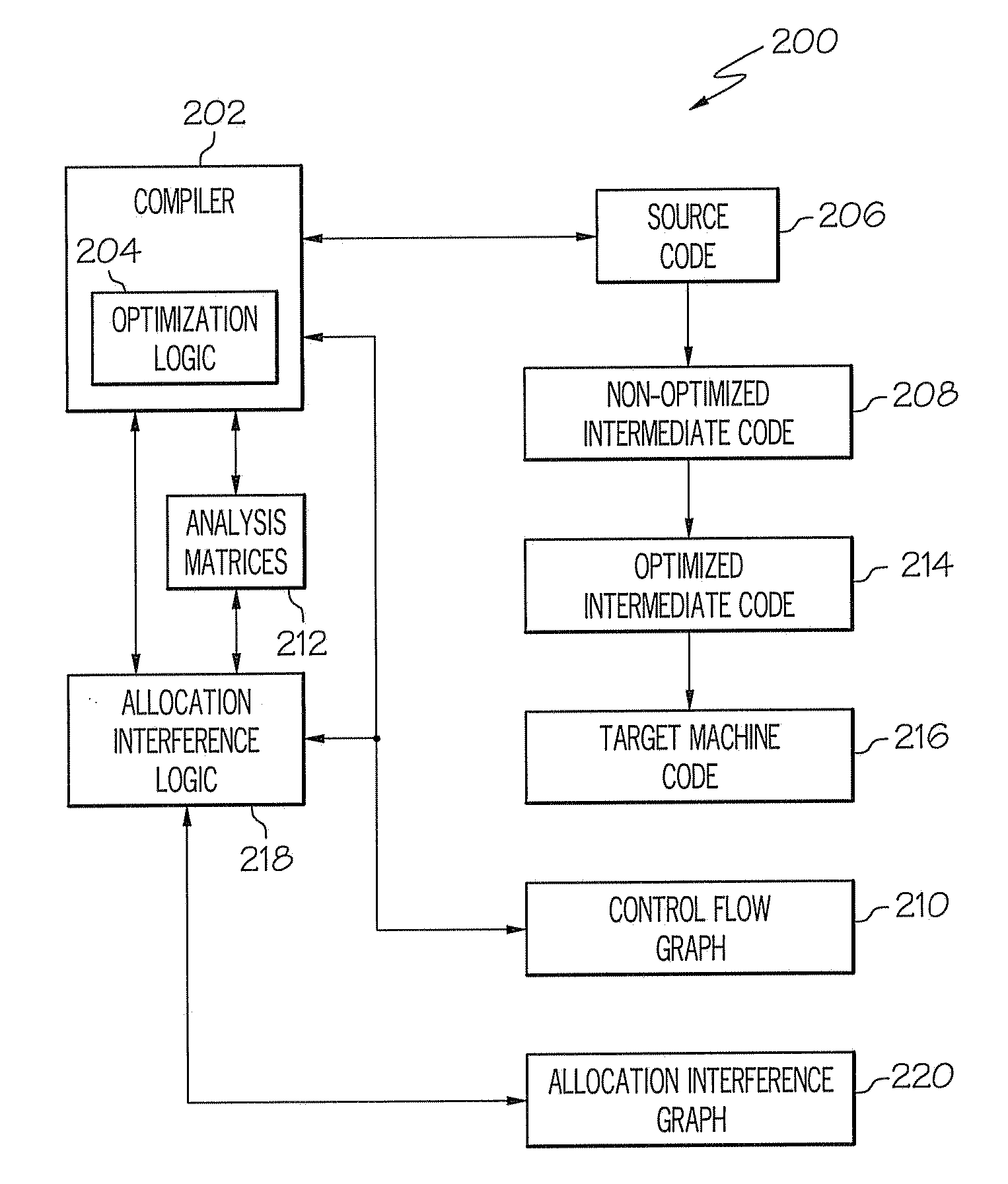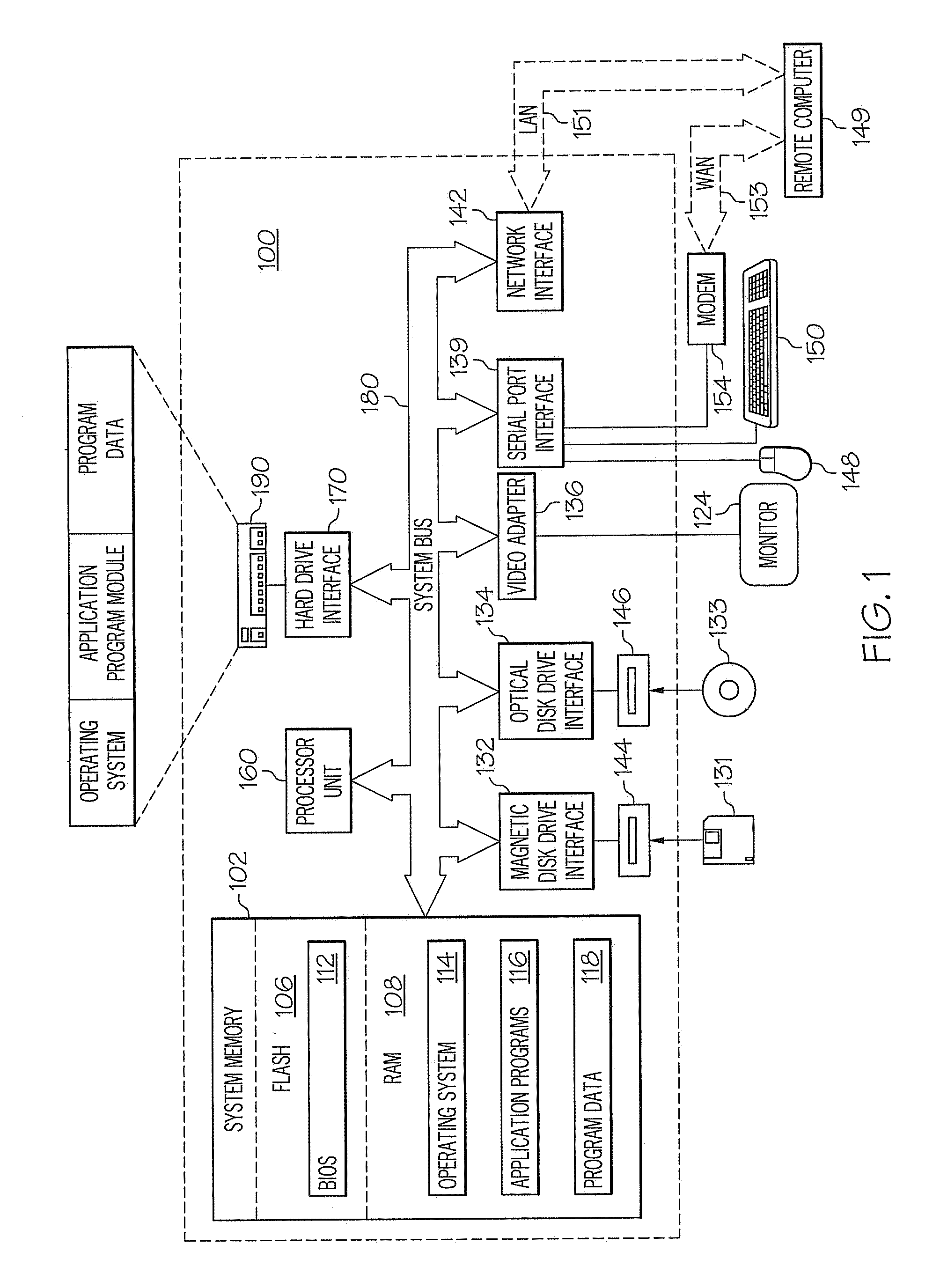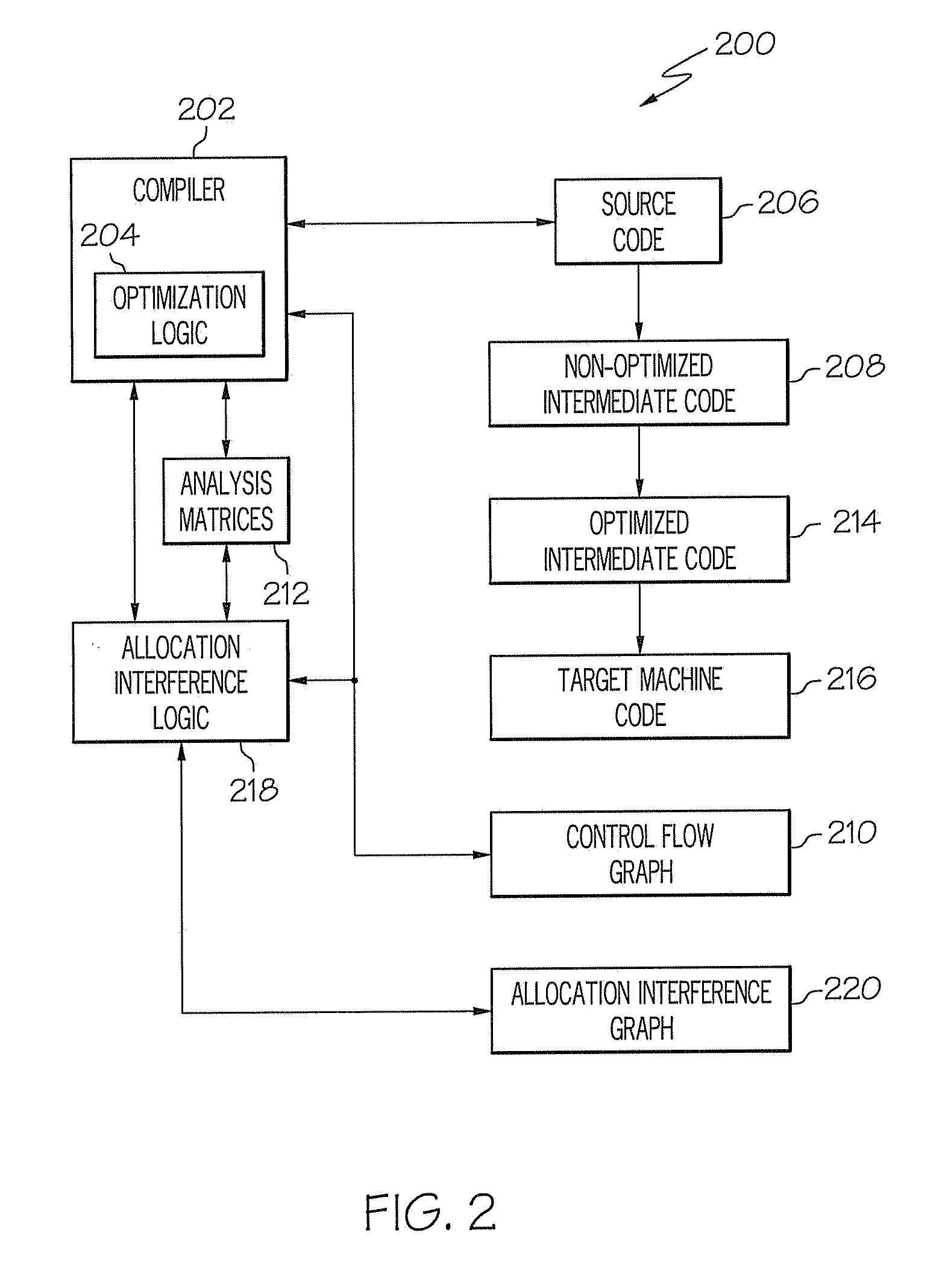System and Method for Optimizing Compiler Performance by Object Collocation
a compiler and object technology, applied in computing, instruments, electric digital data processing, etc., can solve the problems of not being able to perform scaling and restrictions
- Summary
- Abstract
- Description
- Claims
- Application Information
AI Technical Summary
Benefits of technology
Problems solved by technology
Method used
Image
Examples
Embodiment Construction
[0018]Exemplary embodiments provide compiler optimization by performing object collocation at compile time. Object collocation supports memory management optimization where two separate objects are turned into two uses of the same object. In an exemplary embodiment, compiler analysis is performed that determines, at compile time, when multiple objects are not used simultaneously, and allocates those objects to the same location in memory. A combination of analysis logic is applied to prove that objects can be collocated safely such that functional behavior of a program creating and using the objects is the same before and after object collocation is performed. While prior art collocation may involve locating two objects next to each other, the object collocation performed by exemplary embodiments automatically transforms program code to replace multiple dynamically allocated objects with multiple uses of a single object.
[0019]Turning now to the drawings, it will be seen that in FIG....
PUM
 Login to View More
Login to View More Abstract
Description
Claims
Application Information
 Login to View More
Login to View More - R&D
- Intellectual Property
- Life Sciences
- Materials
- Tech Scout
- Unparalleled Data Quality
- Higher Quality Content
- 60% Fewer Hallucinations
Browse by: Latest US Patents, China's latest patents, Technical Efficacy Thesaurus, Application Domain, Technology Topic, Popular Technical Reports.
© 2025 PatSnap. All rights reserved.Legal|Privacy policy|Modern Slavery Act Transparency Statement|Sitemap|About US| Contact US: help@patsnap.com



